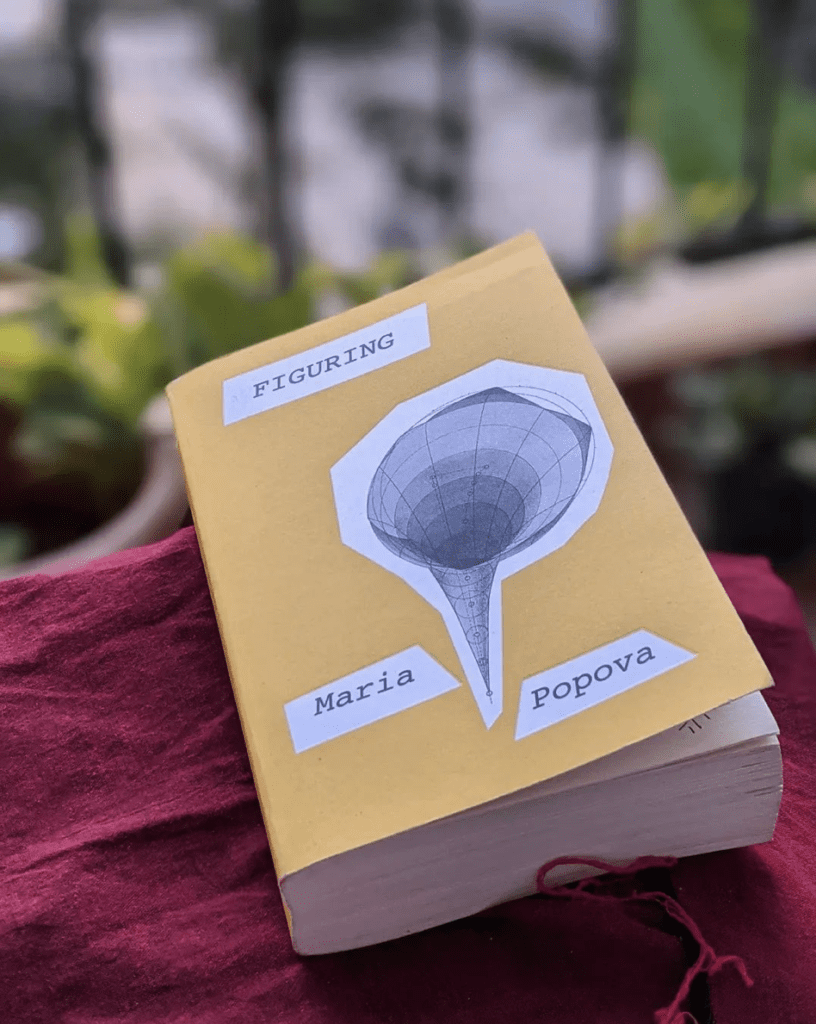Brain Pickings has been one of my favourite websites for a long time, and thus, this book automatically went into the wishlist. But as with many good things, it took a while to get into the cart! This is not a book that one can (or should) categorise easily, but as a reader, what I got was an appreciation of the essence and texture of life, and its interconnectedness. The book, I’d say, is poetry delivered in prose. A good thing for people like me who cannot appreciate the former! I read the title -“Figuring”, both as exploration and understanding, as well as mathematics being the language of the universe, but I am guessing it’s the first that the author intended.
The narrative is guided by the lives of many people. Some of them easily known, and some others not famous enough, unfortunately and unfairly. The book begins with Johannes Kepler, who would “quarry the marble out of which classical physics would be sculpted”. The stargazer, writer of science fiction, whose North Star was the discovery of truth, irrespective of what society thought of it. Including an insight far ahead of time – “The difference between the fates of the sexes is not in the heavens but in the earthly construction of gender.”
Maybe the narrative was constructed with intellectual successors in mind too. And it’s probably through the years of sifting through content for the blog that the author found connections between the historical figures – events, mutual friends, pure chance, dates. And thus it is that we reach Maria Mitchell, “besotted with the splendour of the cosmos”, all of 12 years old, catching an eclipse, and beginning her journey towards becoming America’s first professional astronomer. She would hold Mary Somerville, Elizabeth Barrett Browning, and Caroline Herschel as examples of the era’s “few women of genius who have become the successful rivals of man in the paths they have chosen.” Ada Lovelace has a brief cameo here too.
In 1825, Margaret Fuller is fifteen, and writes that “I am determined on distinction”. In 1845, she would author “Woman in the Nineteenth Century” that “lit the Promethean fire of possibility for women”. Even as her intellectual life soared, there were very few highs in her personal life.
Much like Emily Dickinson, whose hundreds of poems were “verses of unambiguous beauty that thrill and taunt with their ambiguous meaning”. Though she was not well-known during her lifetime, she is now regarded as one of America’s foremost and unique poets.
Harriet Hosmer started her battles against expectation and convention fairly early in life, but with that also came the awareness that “everyone and everything we love is eventually swept away”. And yet she gave humanity a distinct perspective of what is possible as an artist and a human being.
The last recipient of the intellectual torch (in the book) is Rachel Carson, a relatively more contemporary figure. In another show of narrative mastery, the author links Carson’s story to its beginning – Lise Meitner, a pioneer in nuclear physics, whose scientific discoveries would have malevolent applications. A turning point for science and humanity. As Rachel Carson would observe years later, “We still talk in terms of conquest. We still haven’t become mature enough to think of ourselves as a very tiny part of a vast and incredible universe.. We’re challenged, as mankind has never been challenged before, to prove our maturity and mastery – not of nature but of ourselves.” Rachel Carson showcased and ignited the questions and fights that have now become global environmental movements.
The book forces us to ask the essential and existential questions – what makes a good life, what does it mean to live one that positively impacts humanity? And to me, whether it is worth it. Meanwhile, to note that along with these personalities, there are also giants in the periphery, who are probably more popular – Ralph Waldo Emerson, Charles Darwin, Nathaniel Hawthorne, Walt Whitman, and so on.
As I wrote before, the book is difficult to categorise not just because of its narrative style and content, but also because of the multitude of themes it covers – feminism, Transcendentalism, queer relationships, the stars in the sky and the life on the ocean floor – all from the perspective of “the pale blue dot” and its sentient beings.
P.S. With 100 pages to go, I had a visceral experience of the transience of life – a heart attack! Such is life.


2 thoughts on “Figuring”